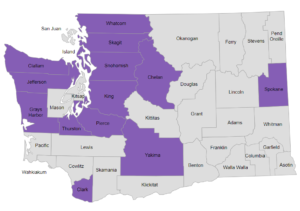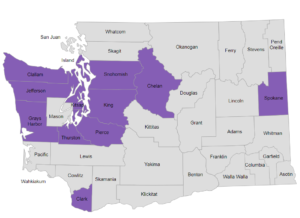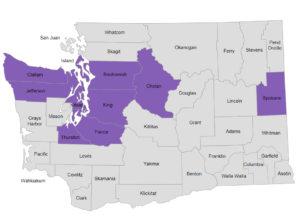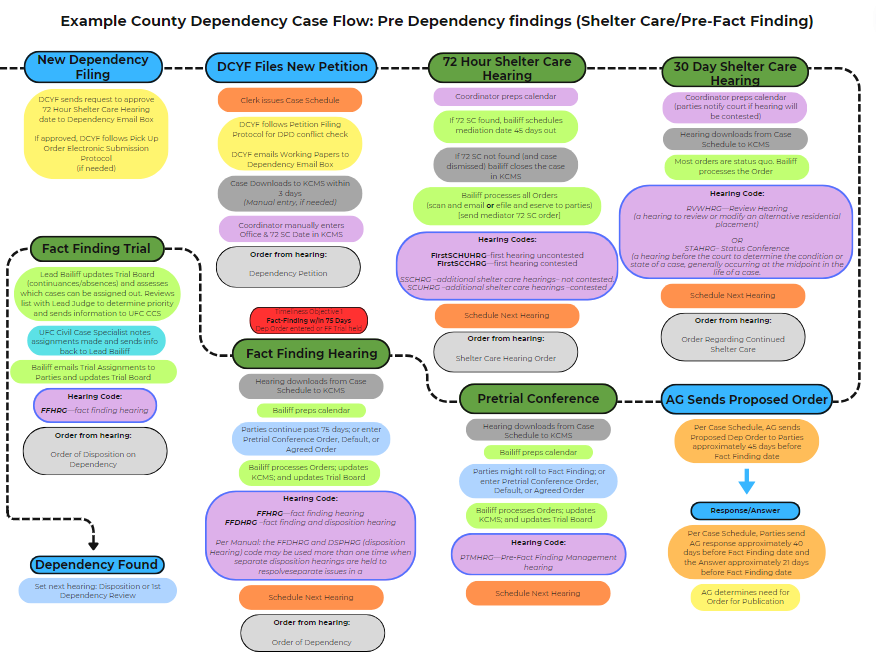Renee Morioka1
Chapter Sections
§1 Legislative Overview and History
The 1970s spawned federal policy against incarcerating noncriminal youth (“status offenders”) in secure detention facilities. Enactments such as the Federal Juvenile Justice and Delinquency Prevention Act in 1974 encouraged referral of status offenders to counseling, treatment, and other non-secure, voluntary, community-based treatment programs. Over time, failures to properly develop adequate services for youth and their families, deaths of runaway youth, and the movement toward youth discipline and accountability caused lawmakers to rethink their blanket prohibition against incarcerating noncriminal youth.
Washington was not immune to these societal trends. The deaths of three runaway youth in 1993—most notably, the death of Rebecca “Becca” Hedman—forced Washington lawmakers to take a closer look at the youth and their families in our communities.2 These deaths, coupled with vocal parental rights groups’ insistence, caused a review of Washington’s 1977 Juvenile Justice Act. As a result, Senate Bill 5439 (the “Becca Bill”) came into effect in July 1995. The bill, named after Rebecca Hedman, was born of the intent to provide services to at-risk, runaway3, and/or truant youth and their families who were in conflict. The Becca Bill amended Chapter 13.32A (Family Reconciliation Act), Chapter 71, and Chapter 38A of the RCWs which, together, were designed to mandate stricter truancy laws and enforcement. It sought to “empower” parents of runaway, disobedient, and truant children by expanding access to services. The primary mechanism of this “empowerment” was two-pronged: (1) it gave law enforcement and the courts the authority to bring these youth into police custody for placement in secure facilities, and (2) it allowed for the involuntary commitment of these youth to substance abuse and mental health services. The provision and utilization of these services were designed to be done in two phases: community-based intervention and legal intervention.
Community-based interventions called to action the expertise of the staff of secure crisis residential centers (S-CRCs), crisis residential centers (CRCs), mental health counseling agencies, substance abuse treatment agencies, other community agencies, and the Department of Social and Health Services (primarily the Family Reconciliation Services (FRS) units of the Division of Children and Family Services). The second and more intrusive level/phase of intervention is court intervention which includes the At-Risk Youth (ARY), Child in Need of Services (CHINS), and Truancy processes.
To these ends, the Legislature wrote that it recognizes there is a need for services and assistance for parents and children who are in conflict. These conflicts are manifested by children who exhibit various behaviors including: running away, substance abuse, serious acting out problems, mental health needs and other behaviors that endanger themselves or others….The legislature intends to increase the safety of children through the preservation of families and the provision of assessment, treatment, and placement services or children in need of services and at-risk youth including services and assessments.4
Further, it is the intent of the Legislature to
- Preserve, strengthen, and reconcile families experiencing problems with at-risk youth;
- Provide a legal process by which parents who are experiencing problems with at-risk youth can request and receive assistance from juvenile courts in providing appropriate care, treatment, and supervision to such youth; and,
- Assess the effectiveness of the family reconciliation services program.5
§1a Definitions
- “Abuse or neglect” means the injury, sexual abuse, sexual exploitation, negligent treatment, or maltreatment of a child by any person under circumstances which indicate that the child’s health, welfare, or safety is harmed, excluding conduct permitted under RCW 9A.16.100.6 An abused child is a child who has been subjected to child abuse or neglect as defined in this section.
- “Administrator” means the individual who has the daily administrative responsibility of a crisis residential center or his or her designee.
- “At-risk youth” means a juvenile (i) Who is absent from home for at least 72 consecutive hours without the consent of his or her parent; (ii) Who is beyond the control of his or her parent such that the child’s behavior endangers the health, safety, or welfare of the child or any other person; or (iii) Who has a substance abuse problem for which there are no pending criminal charges related to the substance abuse.
- “Child,” “juvenile,” and “youth” mean any unemancipated individual who is under 18 years old.
- “Child in need of services” means a juvenile (i) Who is beyond the control of his or her parent such that the child’s behavior endangers the health, safety, or welfare of the child or another person; (ii) Who has been reported to law enforcement as absent without consent for at least 24 consecutive hours on two or more separate occasions from the home of either parent, a crisis residential center, an out-of-home placement, or a court-ordered placement; and (A) Has exhibited a serious, substance abuse problem; or (B) Has exhibited behaviors that create a serious risk of harm to the health, safety, or welfare of the child or any other person; (iii) Who is in need of (A) Necessary services, including food, shelter, health care, clothing, or education, or services designed to maintain or reunite the family; (B) Who lacks access to, or has declined to utilize, these services; and (C) Whose parents have evidenced continuing but unsuccessful efforts to maintain the family structure or are unable or unwilling to continue efforts to maintain the family structure; or (iv) Who is a “sexually exploited child” (defined below).
- “Child in need of services petition” means a petition filed in juvenile court by a parent, child, or the Department of Social and Health Services (DSHS) seeking adjudication of placement of the child.
- “Crisis residential center” means a secure or semi-secure facility established pursuant to Chapter 74.13 RCW.
- “Custodian” means the person or entity that has the legal right to the custody of the child.
- “Extended family member” means an adult who is a grandparent, brother, sister, stepbrother, stepsister, uncle, aunt, or first cousin with whom the child has a relationship and is comfortable, and who is willing and available to care for the child.
- “Guardian” means that person or agency that (a) has been appointed as the guardian of a child in a legal proceeding other than a proceeding under Chapter 13.34 RCW, and (b) has the right to legal custody of the child pursuant to such appointment. The term “guardian” does not include a “dependency guardian” appointed pursuant to a proceeding under Chapter 13.34 RCW.
- “Multidisciplinary team”7
- (MDT) means a group formed to provide assistance and support to a child who is an at-risk youth or a child in need of services and his or her parent. The team shall include the parent, a DSHS social worker, a local government representative when authorized by the local government, and when appropriate, members from the mental health and substance abuse disciplines. The team may also include, but is not limited to, educators, law enforcement personnel, probation officers, employers, church members, tribal members, therapists, medical personnel, social service providers, placement providers, and extended family members. The team members are volunteers who do not receive compensation while acting in a capacity as a team member, unless the member’s employer chooses to provide compensation or the member is a state employee.
- “Out-of-home placement” means a placement in a foster family home or group care facility licensed pursuant to RCW Chapter 74.15 or placement in a home, other than that of the child’s parent, guardian, or legal custodian, not required to be licensed pursuant to RCW Chapter 74.15.
- “Parent” means the parent or parents who have the legal right to custody of the child. “Parents” include custodians or guardians.
- “Secure facility” means a crisis residential center that has locking doors, locking windows, or a secured perimeter, designed and operated to prevent a child from leaving without permission of the facility staff.
- “Semi-secure facility” means any facility, including but not limited to crisis residential centers or specialized foster family homes, operated in a manner to reasonably assure that youth placed there will not run away. Pursuant to rules established by DSHS, the facility administrator shall establish reasonable hours for residents to come and go from the facility such that no residents are free to come and go at all hours of the day and night. To prevent residents from taking unreasonable actions, the facility administrator, where appropriate, may condition a resident’s leaving the facility upon the resident being accompanied by the administrator or the administrator’s designee. Further, the resident may be required to notify the administrator or the administrator’s designee of any intent to leave, his or her intended destination, and the probable time of his or her return to the center.
- “Sexually exploited child” means any person under the age of 18 who is a victim of the crime of commercial sex abuse of a minor under RCW 9.68A.100, promoting commercial sexual abuse of a minor under RCW 9.68A.101, or promoting travel for commercial sexual abuse of a minor under RCW 9.68A.102.8
- “Staff secure facility” means a structured group care facility licensed under rules adopted by DSHS with a ratio of at least one adult staff member to every two children.
- “Temporary out-of-home placement” means an out-of-home placement of not more than 14 days ordered by the court at a fact-finding hearing on a CHINS petition.
§1b Taking a Child Into Custody
When Law Enforcement Must Take a Child into Custody
Law enforcement must take a child into custody under the following circumstances:
- If law enforcement has been contacted by the parent of the child and informed that the child is absent from parental custody without consent;
- If law enforcement reasonably believes, considering the child’s age, the location, and the time of day, that a child is in circumstances which constitute a danger to the child’s safety or that a child is violating a local curfew ordinance;
- If an agency legally charged with the supervision of a child has notified law enforcement that the child has run away from placement;
- If law enforcement has been notified by the juvenile court that the court finds probable cause exists to believe that the child has violated a court placement order issued under RCW Chapter 13.32A or RCW Chapter 13.34 or that the court has issued an order for law enforcement pick-up of the child under either of those chapters.9
Additionally, if law enforcement has a reasonable suspicion that a child is being unlawfully harbored in violation of RCW 13.32A.080,10 the officer shall remove the child from the custody of the person harboring the child and shall transport the child to one of the locations specified in RCW 13.32A.060.11
Duration and Transfer of Custody
Law enforcement custody must continue for only as long as reasonably necessary to transport and place the child at an appropriate location.12 Law enforcement custody ends when either once custody is transferred to a person, agency, or other authorized entity under RCW 13.32A or, once law enforcement releases the child because no placement is available.13
Transfer of custody is not complete unless the person, agency, or entity to whom the child is released agrees to accept custody.14
Procedures Once a Child is Taken into Custody
If a child is taken into custody under RCW 13.32A.050(1)(a) or (b), the following applies:
- Law enforcement must inform the child of the reasons he or she was taken into custody;
- Law enforcement must transport the child home or to the parent’s place of employment if the parent is not at home. If the parent requests, law enforcement may transport child to the home of an adult family member, CRC, DSHS, or licensed youth shelter. Law enforcement must utilize the drop-off location that is within a reasonable distance from the parent’s home.15
- If law enforcement is unable to contact a parent it must take the child to a CRC if:
- The child expresses fear or distress at the prospect of being returned to his or her home which leads law enforcement to believe there is a possibility that the child is experiencing some type of child abuse or neglect;
- It is not practical to transport the child to his or her home or place of the parent’s employment; or
- There is no parent available to accept custody of the child.
- If, after attempting to notify the parent and failing, and CRC is full, not available, or not located within a reasonable distance, LE may request that DSHS accept custody of the child. If DSHS determines that an appropriate placement is currently available, DSHS shall accept custody and place the child in an out-of-home placement. Upon accepting custody of a child from the officer, DSHS may place the child in an out-of-home placement for up to 72 hours (excluding Saturdays, Sundays, and holidays) without filing a CHINS petition, obtaining parental consent, or obtaining an order for placement under RCW Chapter 13.34. DSHS may take a runaway youth to a secure facility after attempting to notify the parent of the child’s whereabouts. DSHS may not take a child to a secure facility if DSHS has reason to believe that the reason for the child’s runaway status is the result of abuse or neglect.16If DSHS declines to accept custody of the child, the officer may release the child after attempting to take the child to the following, in the order listed: the home of an adult extended family member; a responsible adult; or a licensed youth shelter. The officer shall immediately notify DSHS if no placement option is available and the child is released.17 If the child is taken into custody under RCW 13.32A.050(1) (c),18 the following applies:
- Law enforcement must inform the child of the reasons why he or she was taken into custody; and
- Law enforcement may release the child to the supervising agency or must take the child to a S-CRC.19
If the child is taken into custody under RCW 13.32A.050(1)(d),20 the following applies:
- Law enforcement must inform the child of the reasons why he or she was taken into custody; and
- Law enforcement must place the child in a juvenile detention facility if the Court has entered a detention order. If no detention order was entered, then law enforcement may still place the child in a juvenile detention facility or place child in another secure facility such as an S-CRC.21
Duration of Transferred Custody
If law enforcement has transferred custody to DSHS or a CRC, out-of-home placement may only continue for up to 72 hours (excluding Saturdays, Sundays, and holidays). Thereafter, out-of-home placement may only continue if (1) a parent consents; (2) a CHINS petition has been filed under RCW 13.32A; or (3) a Court has ordered out-of-home placement because a dependency petition has been filed under RCW 13.34.
§1c Secure Crisis Residential Centers (S-CRCs)
The Legislature recognizes that crisis residential centers provide an opportunity for children to receive short-term necessary support and nurturing in cases where there may be abuse or neglect. The legislature intends that center staff provide an atmosphere of concern, care, and respect for children in the center and their parents.22 A child admitted to a secure facility located in a juvenile detention center shall remain in the facility for at least 24 hours after admission but for not more than five consecutive days. If the child is transferred between secure and semi-secure facilities, the aggregate length of time spent in all such centers or facilities may not exceed fifteen consecutive days per admission and in no event may a child’s stay in a secure facility located in a juvenile detention center exceed five days per admission.23
Notwithstanding the provisions of RCW 13.32A.130(1), parents may remove their child at any time during the five-day period unless the staff of the crisis residential center has reasonable cause to believe that the child is absent from the home because he or she is abused or neglected or if allegations of abuse or neglect have been made against the parents. DSHS or any agency legally charged with the supervision of a child may remove a child from a crisis residential center at any time after the first 24-hour period after admission has elapsed and only after full consideration by all parties of the all factors.24
The facility administrator shall determine within 24 hours after a child’s admission to a secure facility whether the child is likely to remain in a semi-secure facility and may transfer the child to a semi-secure facility or release the child to DSHS. The determination shall be based on
- The need for continued assessment, protection, and treatment of the child in a secure facility; and
- The likelihood the child would remain at a semi-secure facility until his or her parents can take the child home or a petition can be filed.
In making the determination the administrator is required to consider the following information, if known:
- The child’s age and maturity;
- The child’s condition upon arrival at the center;
- The circumstances that led to the child’s being taken to the center;
- Whether the child’s behavior endangers the health, safety, or welfare of the child or any other person;
- The child’s history of running away; and
- The child’s willingness to cooperate in the assessment.
If the administrator of a secure facility determines the child is unlikely to remain in a semi-secure facility, the administrator shall keep the child in the secure facility. In order to provide space for the child, the administrator may transfer another child who has been in the facility for at least 72 hours to a semi-secure facility. The administrator is only permitted to transfer a child after determining that the child who may be transferred is likely to remain at the semi-secure facility.
A CRC administrator is authorized to transfer a child to a CRC in the area where the child’s parents reside or where the child’s lawfully prescribed residence is located. An administrator may transfer a child from a semi-secure facility to a secure facility whenever he or she has made full consideration of all factors and reasonably believes that the child is likely to leave the semi-secure facility and not return.25 Upon admitting a child or learning that a child absent from home is placed out of the home, the administrator or DSHS shall notify the child’s parent and provide transportation for the child to the residence of the parent or other out-of-home placement. If the administrator performs these duties, he or she shall also notify DSHS of the child’s whereabouts.26 The administrator is also required to notify parents and the appropriate law enforcement agency immediately when any child leaves the center without authorization.27
§2 Family Reconciliation Services
Families who are in conflict or who are experiencing problems with at-risk youth, or a child who may be in need of services may request family reconciliation services from DSHS. DSHS may involve a local multidisciplinary team in response for assessment and provision of services. Such services shall be provided to alleviate personal or family situations which present a serious and imminent threat to the health or stability of the child or family and to maintain families intact wherever possible. Family reconciliation services shall be designed to develop skills and supports within families to resolve problems related to at-risk youth, children in need of services, or family conflicts. These services may include, but are not limited to, the following:
- Referral for suicide prevention;
- Psychiatric or other medical care;
- Psychological, mental health, and drug or alcohol treatment;
- Welfare, legal, educational, or other social services; and
- Training in parenting, conflict management, and dispute resolution skills.28
As indicated at the outset of this chapter, utilization of FRS is part of the “first phase” of intervention—community-based intervention. That said, FRS can also be a prelude to the filing of a dependency petition if it is thought that some parental deficit is involved. FRS has specialized units within DSHS, Division of Children and Family Services, with particular expertise in assisting youth and their families in conflict as identified by the Becca Bill and as indicated in RCW Chapters 74.14A and 74.13.
§3 Legal Intervention: At-Risk Youth and Child In Need of Services Petitions
The second phase of intervention utilizes legal processes concerning, At-Risk Youth (RCW 13.32A), Child In Need of Services petitions (RCW 13.32A), and truancy (RCW 28A.225) to assist families and youth in conflict as identified in the Becca Bill. For more information concerning At-Risk Youth Petitions, please refer to Chapter 25. CHINS petitions are discussed in Chapter 26, and truancy issues are discussed in further detail in Chapter 27.
Download this chapter: Chapter 24 – Family Reconciliation Act (FRA)
ENDNOTES
- Renee Morioka earned her Bachelor of Arts in Criminal Justice and Philosophy from Seattle University in 1992. She attended Seattle University Law School between the years 1992–1995, and during that time clerked for the Washington State Office of the Attorney General as a law clerk for both the Labor and Industries Division in Tacoma, as well as the Fish and Wildlife Division in Olympia. She has been with the Office since September 1995 as an Assistant Attorney General representing the Department of Social and Health Services in the Tacoma Office. After more than four years on Pierce County’s dependency drug court team, Renee has returned to a dependency litigation caseload. She continues to be an active member of the Office’s Juvenile Litigation Training Committee, and the in-house specialist on Becca Bill and Special Immigrant Juvenile Status (SIJS) proceedings.
- Rebecca “Becca” Hedman’s life story was a compelling catalyst prompting Washington lawmakers to pass the “Becca Bill.” Becca was sexually abused by her natural mother and then by her adoptive brother. Despite extensive mental health counseling, Becca “rebelled” as a teenager and began using crack-cocaine and engaging in prostitution. Her parents utilized existing community resources, and Becca spent time in crisis residential centers (CRCs) and group homes. While on “run” status, Becca was solicited by a 35-year-old man who murdered her. Becca’s parents aligned with other parents’ rights groups and called lawmakers to action.
- In 2010, E.S.H.B. 2752 added a new section to chapter 13.32A RCW (codified in a note to RCW 13.32A.082) that states, “The legislature finds that youth services provide safety to youth on the streets and are a critical pathway to ensuring the youth’s return home. Runaway youth are without protection, live under the threat of violence, and fall victim to predators who exploit their vulnerability. The policy of this state is to provide assistance to youth in crisis and to protect and preserve families. In order to effectively serve youth on the streets and promote their safe return home, shelters must have the time to establish and maintain an environment that facilitates open communication and trust.
The legislature also finds that parents of runaway youth have an interest in knowing their sons and daughters are safe in a shelter, rather than on the streets without protection. The legislature further finds that law enforcement and the department can notify a parent that the youth is safe, without disclosing the youth’s location or compromising the ability of youth services providers to effectively assist youth in crisis.” E.S.S.B. 2752, sec. 1, 61st Leg., Reg. Sess. (Wash. 2010); Laws of 2010, ch. 229, sec. 1. - RCW 13.32A.010.
- RCW 13.32A.015.
- “[T]he physical discipline of a child is not unlawful when it is reasonable and moderate and is inflicted by a parent, teacher, or guardian for purposes of restraining or correcting the child. Any use of force on a child by any other person is unlawful unless it is reasonable and moderate and is authorized in advance by the child’s parent or guardian for purposes of restraining or correcting the child.” RCW 9A.16.100.
- Purpose and duties: MDTs assist families by coordinating referrals to community services. They also evaluate youth and other family members for services and, with parental consent, create a plan for services and assist families in obtaining those services. MDTs also make referrals to substance abuse and mental health treatment services. In certain circumstances, the MDT may recommend that no further need for intervention exists as the conflict has been resolved or continue to work with the family to resolve the conflict. RCW 13.32A.044. MDTs have no standing in any subsequent court action under Title 13 and may assist families in filing CHINS petitions when requested. How Formed: Administrators of CRCs may ask for the MDT’s assistance when the child’s parents cannot be contacted. The Administrator may convene an MDT at the child’s or parent’s request. The Administrator is required to convene an MDT if the Administrator believes that the child is a child in need of services and the parent is unavailable or unwilling to continue with efforts to resolve the conflict. If the Administrator is unable to contact the parents within five days of the MDT’s convening, the case must then be referred to DSHS for consideration of dependency filing under RCW Chapter 13.34. Disbandment of MDTs: If an MDT was formed because the Administrator believed the case was appropriate for a CHINS petition, and no CHINS petition was filed by DSHS within 24 hours (excluding weekends and holidays), the parent may request that the MDT be disbanded. If a CHINS petition was filed, however, the parent may not disband the team until the initial hearing is held under RCW 13.32A.179. The court may allow the team to continue if an out-of-home placement is ordered under RCW 13.32A.179(3). Upon the filing of an ARY petition under RCW 13.32A or a dependency petition under RCW 13.34, the MDT shall cease to exist, unless the parent requests continuation of the team or unless the out-of-home placement was ordered under RCW 13.32A.179(3). RCW 13.32A.042.
- RCW 13.32A.030(17).
- RCW 13.32A.050(1)(a–d).
- A person commits the crime of unlawful harboring of a minor if the person provides shelter to a minor without the consent of a parent of the minor and after the person knows that the minor is away from the home of the parent, without the parent’s permission, and if the person intentionally: (i) Fails to release the minor to a law enforcement officer after being requested to do so by the officer; or (ii) Fails to disclose the location of the minor to a law enforcement officer after being requested to do so by the officer, if the person knows the location of the minor and had either taken the minor to that location or had assisted the minor in reaching that location; or (iii) Obstructs a law enforcement officer from taking the minor into custody; or (iv) Assists the minor in avoiding or attempting to avoid the custody of the law enforcement officer.
- RCW 13.32A.050(6).
- RCW 13.32A.050(2).
- RCW 13.32A.050(2).
- RCW 13.32A.050(2).
- RCW 13.32A.060(1)(a).
- RCW 13.32A.128.
- RCW 13.32A.128(1)–(5).
- Law enforcement may take a child into custody if “an agency legally charged with the supervision of a child has notified a law enforcement agency that the child has run away from placement.” See RCW 13.32A.050(1)(c).
- If an S-CRC is not available or not within a reasonable distance, then law enforcement may place the child at an SS-CRC (semi-secure CRC). RCW 13.32A.060(2).
- Law enforcement may take a child into custody if a law enforcement agency has been notified by the juvenile court that the court finds probable cause exists to believe that the child has violated a court placement order” “or that the court has issued an order for law enforcement pick-up of the child.” See RCW 13.32A.050(1)(d).
- RCW 13.32A.060(2).
- RCW 13.32A.010.
- RCW 13.32A.130(1).
- RCW 13.32A.130(4).
- RCW 13.32A.130(2).
- RCW 13.32A.090.
- RCW 13.32A.095.
- RCW 13.32A.040.
